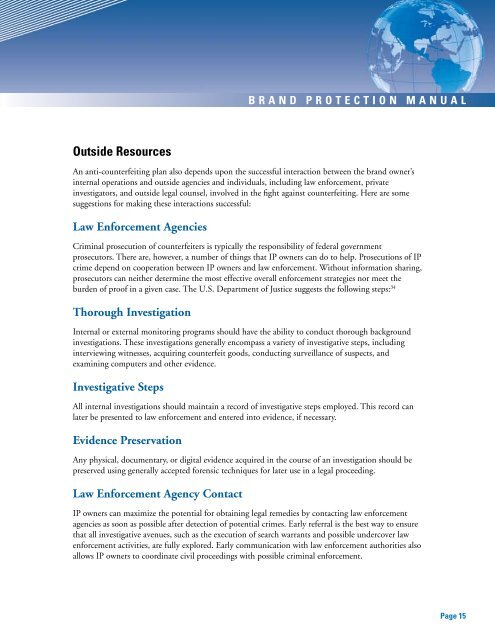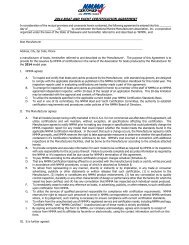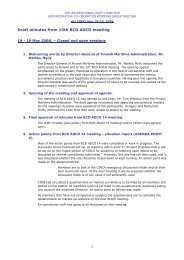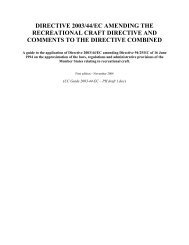Intellectual Property Protection and Enforcement Manual - Ipr-policy.eu
Intellectual Property Protection and Enforcement Manual - Ipr-policy.eu
Intellectual Property Protection and Enforcement Manual - Ipr-policy.eu
Create successful ePaper yourself
Turn your PDF publications into a flip-book with our unique Google optimized e-Paper software.
Br<strong>and</strong> <strong>Protection</strong> <strong>Manual</strong><br />
Outside Resources<br />
An anti-counterfeiting plan also depends upon the successful interaction between the br<strong>and</strong> owner’s<br />
internal operations <strong>and</strong> outside agencies <strong>and</strong> individuals, including law enforcement, private<br />
investigators, <strong>and</strong> outside legal counsel, involved in the fight against counterfeiting. Here are some<br />
suggestions for making these interactions successful:<br />
Law <strong>Enforcement</strong> Agencies<br />
Criminal prosecution of counterfeiters is typically the responsibility of federal government<br />
prosecutors. There are, however, a number of things that IP owners can do to help. Prosecutions of IP<br />
crime depend on cooperation between IP owners <strong>and</strong> law enforcement. Without information sharing,<br />
prosecutors can neither determine the most effective overall enforcement strategies nor meet the<br />
burden of proof in a given case. The U.S. Department of Justice suggests the following steps: 34<br />
Thorough Investigation<br />
Internal or external monitoring programs should have the ability to conduct thorough background<br />
investigations. These investigations generally encompass a variety of investigative steps, including<br />
interviewing witnesses, acquiring counterfeit goods, conducting surveillance of suspects, <strong>and</strong><br />
examining computers <strong>and</strong> other evidence.<br />
Investigative Steps<br />
All internal investigations should maintain a record of investigative steps employed. This record can<br />
later be presented to law enforcement <strong>and</strong> entered into evidence, if necessary.<br />
Evidence Preservation<br />
Any physical, documentary, or digital evidence acquired in the course of an investigation should be<br />
preserved using generally accepted forensic techniques for later use in a legal proceeding.<br />
Law <strong>Enforcement</strong> Agency Contact<br />
IP owners can maximize the potential for obtaining legal remedies by contacting law enforcement<br />
agencies as soon as possible after detection of potential crimes. Early referral is the best way to ensure<br />
that all investigative avenues, such as the execution of search warrants <strong>and</strong> possible undercover law<br />
enforcement activities, are fully explored. Early communication with law enforcement authorities also<br />
allows IP owners to coordinate civil proceedings with possible criminal enforcement.<br />
Page 15











